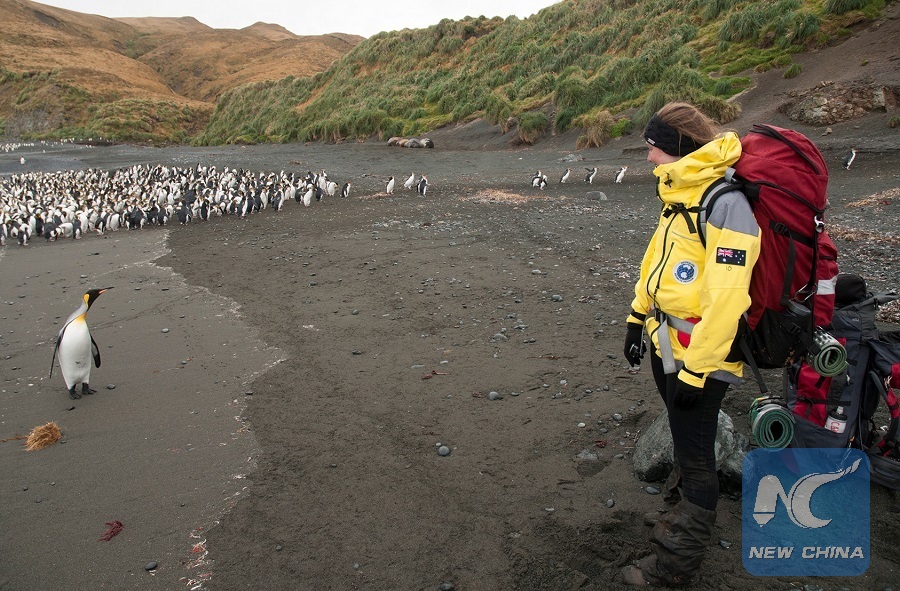
Photo provided by courtesy of Aleks Terauds shows Jasmine Lee stands with penguins in Antarctica. (Xinhua/Australian Antarctic Division)
SYDNEY, July 1 (Xinhua) -- Antarctica is under threat of increased melting of its ice deposits, according to new research has been released, and scientists have warned that climate change is the culprit.
Ice-free areas in the southernmost continent could expand by up to 25 percent by the year 2100 resulting in a substantial shift in the existing biodiversity, according to the scientists.
The lead scientist on the project, Ph.D. candidate Jasmine Lee, told Xinhua on Thursday that the impact of climate change on the ice-free areas, rather than the surrounding ice, is important to better understand the overall ecological situation in the region.
"Until now, Antarctic climate change research has focused mainly on ice sheets and the potential impact on global sea level rise, while the effect of climate change on ice melt and native Antarctic biodiversity has been largely overlooked," Lee said.
"Permanently ice free areas range in size from less than 1 square km to thousands of square km and they are an important breeding ground for seals and seabirds."
"They are also home to small invertebrates such as springtails and nematodes, and vegetation including fungi, lichen and moss, many of which occur nowhere else in the world," she added.
The effect of climate change has the potential to be "good and bad" for the plants and animals in the region, according to Lee, who said that new habitats would be created as the ice dissipated.
"It will be good because it might provide some new opportunities for native Antarctic species to spread out and colonise. But, these opportunities will also be provided to non-native (or alien) species," Lee said.
"Antarctica is currently best protected from these non-native species with its harsh climate and extreme weather, because they can't survive there. But when it becomes warmer, it will become easier for alien species to survive."
One of the other researchers on the project, Dr. Aleks Terauds, senior research scientist at the Australian Antarctic Division said that their data allows them to predict that up to 17,267 square km of ice-free areas will emerge by the end of the century.
"The Antarctic Peninsula shows the greatest change, but there are also impacts along the East Antarctic coastline," Terauds said.
As the ice-free areas expand, the "increased connectivity" afforded to alien species could possibly lead to a detrimental situation for the local wildlife, according to Lee, who said it is likely that the alien species would "outcompete" the existing fauna.
"They will probably be able to 'outcompete' some of these native species, which would make the native species contract and maybe it could eventually lead to extinctions -- in the next couple of centuries," Lee said.
"So there will be winners and losers amongst Antarctic plants and animals, but we are not yet sure which ones they will be."
Lee hopes that the research will make it easier to understand the effect of climate change on the continent, which in turn will allow for strategies to conserve the existing species who call the region home, to be developed.
"This research can help us prepare strategies to prevent or reduce impacts on native species. We can use these ice-free area models to help identify key areas for protection and key areas where we should increase biosecurity," Lee said.
"Humans are a primary method of transport to Antarctica for alien species, so we need to try and prevent the transport of these alien species."

